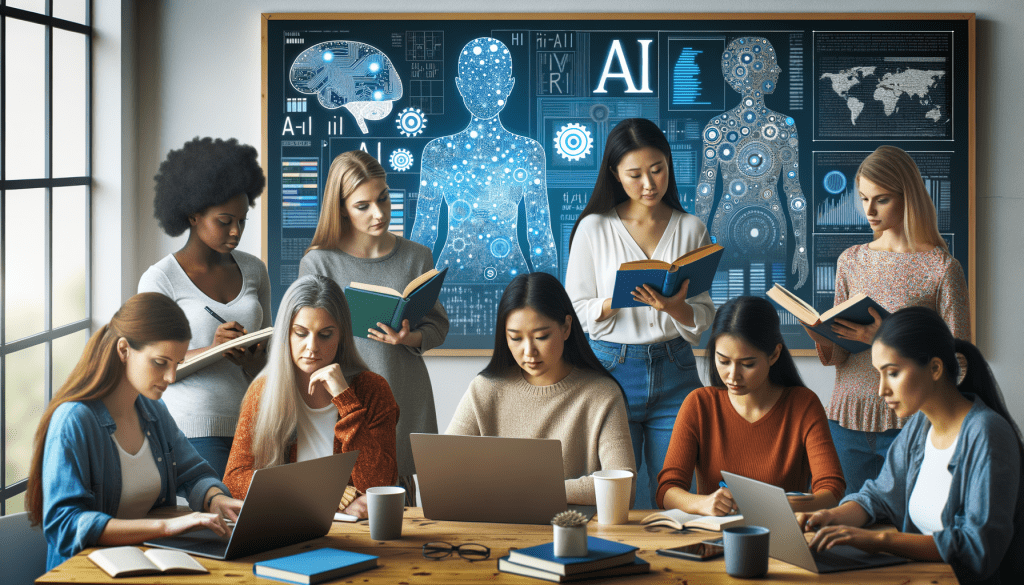Women in AI
Women in AI: Building Inclusive Intelligence for the Future

Statistics of Women in AI
Canada:
In Canada, women remain underrepresented across AI and data science roles. According to a 2025 OECD report, women account for less than 30% of data scientists and machine learning experts—roles that form the technical backbone of the AI workforce【web†source】. While Canada continues to be a global leader in AI through initiatives such as the Pan-Canadian AI Strategy, the Vector Institute in Toronto, and Mila in Montreal, systemic barriers persist.
The under representation begins in education: women are less likely to enroll in AI-related university programs and often face higher dropout rates, citing lack of mentorship and support. In industry, women continue to experience slower promotion rates and higher attrition, often linked to bias, limited access to networks of influence, and cultural barriers within organizations.
Encouragingly, a 2023–24 study by Toronto Metropolitan University showed a 67% year-over-year growth in women working in AI roles, reflecting momentum—but starting from a low base【web†source】. To sustain this growth, Canada must invest in stronger educational pipelines, mentorship programs, and inclusive workplace cultures.
World Wide:
Globally, women represent about 22% of AI professionals across industries, according to the World Economic Forum and Interface-EU’s 2024 report【web†source】. Within technical research, the imbalance is sharper – only 18% of authors at leading AI conferences are women【web†source】.
This imbalance carries significant risks. Homogeneous teams risk building biased systems:
- Healthcare AI that performs worse for women because of male-biased datasets.
- Hiring algorithms that downgrade resumes with female names.
- Facial recognition systems with error rates up to 35% higher for women of color compared to white men.
International initiatives such as AI4ALL, Women in AI Global, and UNESCO’s STEM and Gender Advancement (SAGA) are addressing the issue, but progress is incremental. Without structural change, the digital gender divide could deepen as AI reshapes economies and societies worldwide.
Why is this Important?
The gender gap in AI is not just about fairness—it directly impacts innovation, ethics, and economic growth.
Innovation and Competitiveness
Research shows that gender-diverse teams are more creative and effective problem-solvers. In AI, diversity helps prevent blind spots in product design, testing, and deployment. Companies and nations that embrace inclusion build smarter, more competitive solutions that resonate with diverse global markets.Ethical and Inclusive Technology
AI already influences hiring, healthcare, policing, and finance. Without gender diversity in its design, AI risks scaling existing biases into global infrastructure. By ensuring women play a central role in data curation, algorithm development, and policy oversight, the industry moves toward building transparent, fair, and trustworthy systems.Economic and Social Growth
Closing the gender gap in AI would unlock massive economic potential. McKinsey estimates that advancing gender equality in the workforce could add $12 trillion to global GDP by 2025【web†source】. Beyond economics, women’s inclusion ensures that AI technologies reflect and serve the needs of society as a whole—not just a privileged fraction of it.
Conclusion
Women in AI are not merely a workforce statistic; they are a critical force in shaping the future of ethical and inclusive artificial intelligence. For Canada, achieving gender parity is essential to maintaining global leadership in responsible AI. Globally, increasing women’s participation ensures that AI systems reflect humanity’s full diversity.
Closing the gap requires bold, long-term action:
- Early education programs that spark girls’ interest in STEM.
- Mentorship and sponsorship pathways that sustain careers.
- Inclusive workplace policies that eliminate bias and support advancement.
- Policy frameworks that hold organizations accountable for diversity.
Ultimately, the future of AI—and its ability to drive innovation, fairness, and prosperity —depends on how effectively we empower women to lead and thrive in this transformative field.
The Women in Our Company


